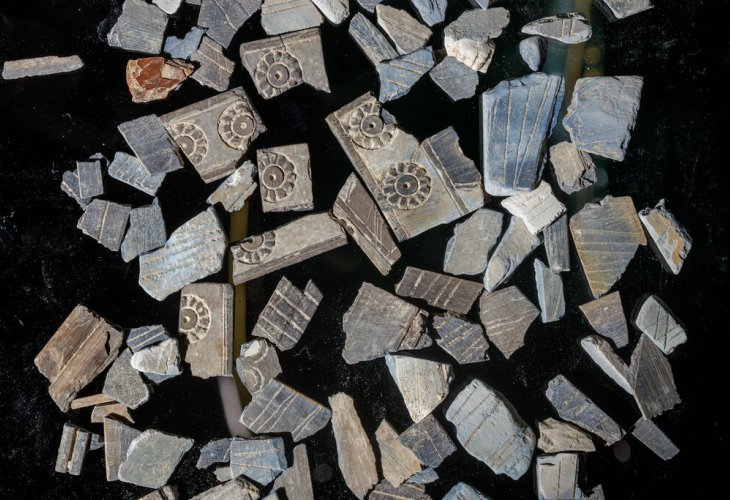Rare Ivory Artifacts from the First Temple Era Discovered in Jerusalem
"Excavations in the City of David Never Cease to Amaze": Rare and Luxurious Ivory Plaques from the First Temple Era Discovered in the City of David.
 (Photo: Eliyahu Yanai, City of David)
(Photo: Eliyahu Yanai, City of David)A collection of ivory plaques from the First Temple period was uncovered during excavations conducted by the Israel Antiquities Authority at the Givati parking lot in the City of David, within the Jerusalem Walls National Park. The collection was found among the ruins of a large administrative structure that operated during the Temple period in Jerusalem. Researchers believe the ivories, which were set in the wooden furniture of the building, were used by its residents, likely wealthy and influential figures, possibly officials or priests.
It's important to understand that in the ancient world, ivory was considered one of the most expensive materials, even surpassing gold.
Excavation directors Prof. Yuval Gadot from the Department of Archaeology and Ancient Near Eastern Cultures at Tel Aviv University and Dr. Yiftah Shalev of the Israel Antiquities Authority stated, "Until now, we recognized decorated ivories only from the capitals of great kingdoms of the First Temple period, such as Nimrud, the capital of Assyria, or Samaria, which was the capital of the Kingdom of Israel. Now, for the first time, Jerusalem joins these capitals. The significance and centrality of Jerusalem in the First Temple era were known to us, but the new discovery vividly demonstrates its importance, placing it alongside the capitals of Assyria and Israel. The exposure of the ivories further enhances our understanding of the city's political and economic status, as part of the global administrative and economic system."
Prof. Gadot and Dr. Shalev further explain that "the prestige of ivory is also related to the considerable expertise required in its processing and decoration. It is likely that the ivory collection uncovered in the City of David was imported, originally crafted by artisans in Assyria. The ivories may have arrived in Jerusalem as a gift from Assyria to Jerusalem's nobility. After comparing with complete objects depicted on wall panels in the palace of the Assyrian king Sennacherib in Nineveh, we suggest reconstructing the ivory plaques from Jerusalem as inlays in a bed, imagined to have been standing on the upper floor of the grand structure."
The Israel Antiquities Authority commented that the impressive structure in which the ivories were found was destroyed in a great fire, likely during the destruction of the First Temple and Jerusalem by the Babylonian Kingdom. The ivories were discovered crushed into tiny and burnt fragments. During the excavation, and in the subsequent wet sifting conducted at the Emek Tzurim National Park, no fewer than 1,500 fragments were found. After a lengthy conservation process, the ivories were reassembled.
Eli Eskosido, Director of the Israel Antiquities Authority, stated, "Excavations in the City of David never cease to amaze. This time, thanks to the delicate and awe-inspiring work of conservators and researchers, we received a glimpse into the daily lives of people who lived here thousands of years ago. These discoveries bring ancient stones to life. The realization that the material wealth possessed by the social elite of Jerusalem in the First Temple period was not inferior to, and perhaps even surpassed, that of other ancient Near Eastern centers, attests to Jerusalem's status and importance at that time."
In the Bible, ivory is mentioned a few times, always in contexts of kings or great wealth: the description of King Solomon's throne (I Kings 10:18), the mention of the ivory tower built by King Ahab in Samaria (I Kings 22:39), and the prophetic admonition by Amos against Israel's nobility: "who lie on beds of ivory and loll on their couches" (Amos 6:4).
The ivories discovered were not the only luxury items found at the site. The building also yielded a seal made of agate (a semi-precious stone), jars that once held wine spiced with vanilla, a seal imprint with the name "Natan-Melech, servant of the king," as well as ornate stone and wood artifacts.

